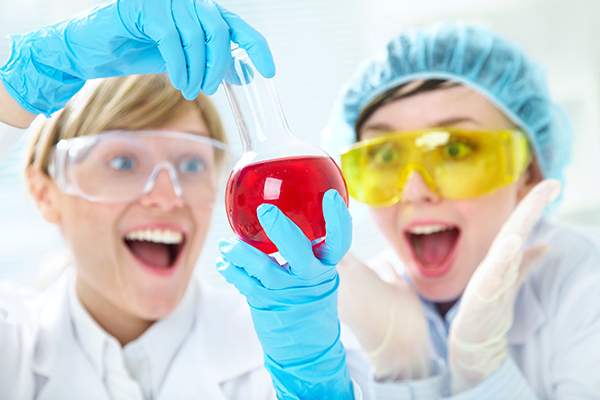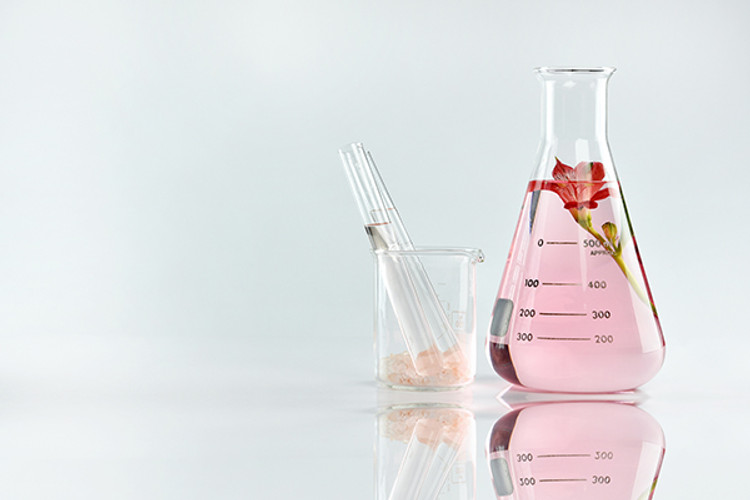Posted by Sweetsation Therapy on 14th Jan 2021
From an idea to the shelf. How a new cosmetic product is born.
It is not a secret that it’s fun to make a cosmetic product. And most of us have tried to make a facial mask or a toner in their kitchen at some point. At the first sight it’s not really hard. Technically true. But would it be a safe product for use and storage, that’s another story. There are multitude of recipes can be found on youtube teaching you how to throw a few ingredients together and make a new best thing for beauty. But they are all missing a few key steps to make sure that your product is stable and safe. Safe to use for yourself or sell or to gift.
I would like to share with you the secrets of what the process is really like to create a new skin care formula.
First, there is a light bulb goes off to create something that would be absolutely awesome. Maybe something innovative that doesn’t yet exist on the market. Or something that would considerably improve a similar product that already offered to the consumer but can be so much better. It could be a better texture, or different delivery system, better and safer preservation system or anything else. It also can be an update of existing product with some new and innovative ingredients that were developed and tested for a better results. First, the decision is made what it would look like, feel like, smell like and how it would perform. What ingredients it must contain and which ingredients should be avoided.
Once this concept is established it goes for verification, to insure that there would be no major regulatory issues or chemical compatibility issues. Regulations of other countries are also considered here. At times there could be some ingredient incompatibility issues that could be apparent right away, but sometimes not. The most challenging part is when we try to create a natural product by taking a synthetic product as a prototype. Not all synthetic ingredients have a natural equivalents that perform the same or similar. Or shell I say, almost never. There is a lot of research and trials goes into establishing a good alternative that might come close to the performance or feel that a synthetic ingredient offers.
Once we establish what ingredients we need, we purchase samples of a few ingredients that would create a structure and viscosity of our future product. We also choose an appropriate preservative that would be compatible with the type and Ph of our product and offer a reliable shelf life. At this time the key active ingredients are also obtained that would respond to the marketing claims of created product. The ingredients are usually sourced from the variety of suppliers as each supplier tends to specialize on specific category of ingredients and doesn’t carry all the needed ingredients in one place.
Sometimes we get lucky and already have all or most ingredients on hand, if they are common. And sometimes they need to be ordered in relatively large quantity to make the project be even possible. Large suppliers often have minimum purchase quantity of 100 kilo which could create a problem with shelf life if it is to be used in small quantity in a formula. The precious ingredient can just expire before we are through the whole batch. In this case we consider alternatives. Oftentimes there is a lead times involved in purchasing the ingredients, especially rare ones and those that are new and popular on the market. 4-8 weeks is common and of course that causes a delay in our project. We need to wait for every single raw material to arrive before we can create the very first sample.
Once everything is in place we create the first sample, based on a brief written formula. Then we evaluate it. Evaluation is based on its look, feel, scent, absorption, however the active ingredient are not included in the first sample. Basic reason is that the very first sample is never perfect or even close, and it would be a shame to waste those precious ingredients. First sample is always the worst sample, but always most memorable. Once we evaluate how the first sample came out, we adjust the formula and make another sample. Then evaluate it again and make another. And then another. And then another. It might take 6 to 10 samples to get it somewhat right, or to the point that it’s suitable to be evaluated in action – on the skin. At this time we often ask family members and friends to test out the sample and provide us with a feedback.

It is rare but can happen, when we receive feedback with requests of multiple changes that mostly address the feel or viscosity or scent. In this case there might be a need to go back and start from scratch addressing those issues. We always have to remember that what we like is not necessarily what everyone else will like. And we have to address the ‘likes’ of the consumer. If we need to start over, we may change the structural ingredients entirely to respond to the feedback we’ve received and then create another sample. This process would continue till we receive 80%-90% of positive feedback. Striving for 100% but realistically, is it possible?
When we receive glowing feedback from our testing group and our new star product is ready or almost ready, a new chapter begins. We test it for stability to verify a suitable shelf life, be it on a store shelves or in your homes. The sample undergoes multiple freeze and thaw rounds, microbiological testing, preservative challenge testing, packaging testing, olfactory testing, Ph stability testing and others. We have to consider that the product may be stored in different temperatures and climate. It also might be shipped to different countries and climate regions and we have to make sure that the product is stable and will survive various types of 'abuse'.
Once everything passes and the new formula is ready, we brainstorm of a perfect name, product description and design packaging. It has to be descriptive, engaging and market appealing.
This is pretty much the process, in short. But in reality it can take a year or even longer to create a product from scratch. It will of course depend on number of revisions and changes along the way, and also times that it takes to obtain all the desired ingredients. It can happen that at first everything looks perfect and then the preservative can fail during testing, and then process starts from the beginning.
As you can see it’s a lot more involved than putting a few ingredients in a bowl and mixing them together, as it may appear from a lot on youtube videos. But still, even with a few failures it's still a fun process.
Would you like to join our testing team? Look out for our newsletter soon.

